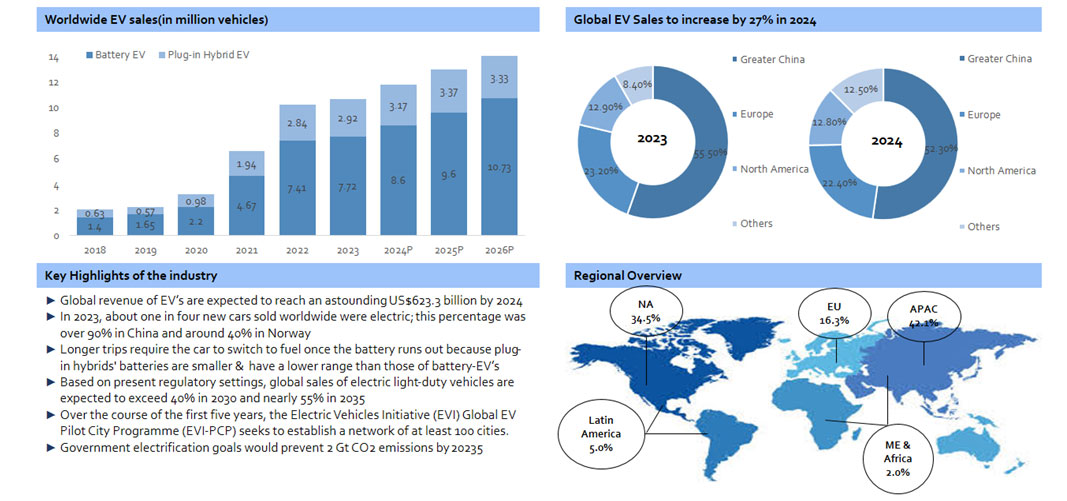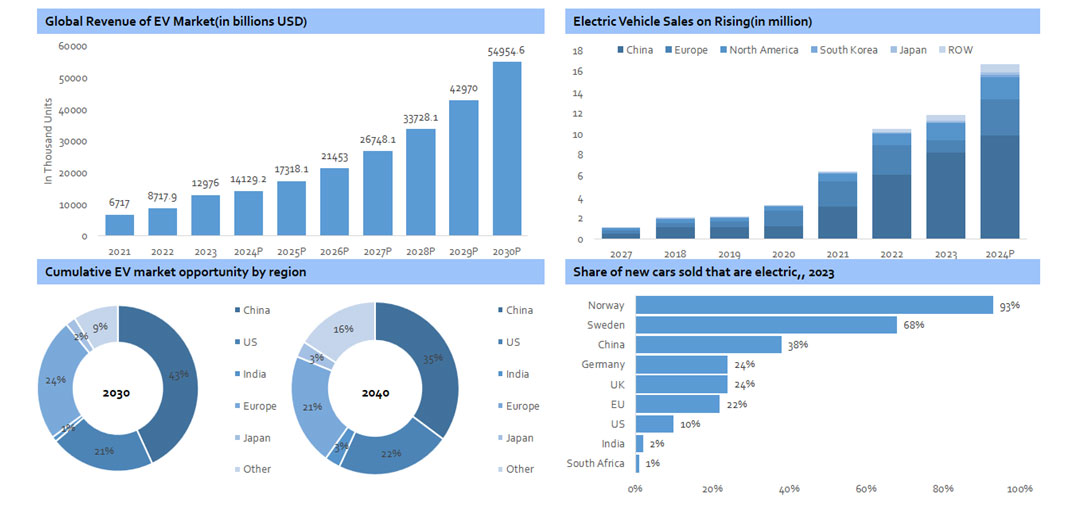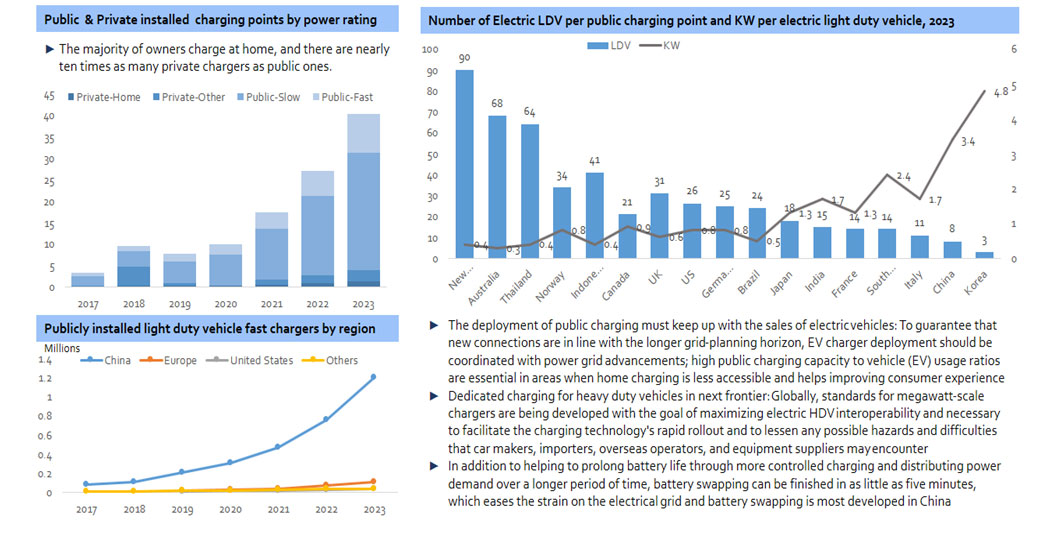

Download Entire report
Pay $4.99The market for electric vehicles was estimated to be worth $321.8 billion globally in 2023 and is projected to grow to $810.1 billion by 2030 at a CAGR of 14.1% with tech advancements


The development of electric vehicles and their capacity to compete with traditional automobile manufacturers has been made possible by declining costs, and advancements in battery technologies have led to an increase in performance levels.
The industry's competitive environment has been significantly impacted by the reduction in the manufacturing barrier for vehicles; the gasoline car era's market stability is being shaken, and the electric vehicle age is about to take off.
Putting money into and growing public charging networks, encouraging the installation of charging stations in homes and workplaces, investigating ultra-fast and wireless charging to improve EV owners' convenience.
The second most frequent excuse given by consumers for not purchasing an EV is inadequate charging infrastructure ,a major element to "range anxiety," the concern that an electric vehicle may run out of battery before finding a charging station
Significant increases in the number of new registrations for electric passenger cars would necessitate increased power production and grid balancing, particularly during periods of peak demand as electrification increases
The safety elements of ADAS may not always function as intended; poor lighting, places with weak network signals, and bad weather might create false alerts or cause ADAS to miss important problems
More engineers & technicians with EV-specific expertise are needed as the demand for EVs grows though demographic changes may make it difficult to meet the workforce need, thus effective training will be essential to overcome this obstacle

Economies of scale may reduce manufacturing costs as more automakers invest in the production of electric vehicles, making EVs more accessible to consumers at the same time that a robust used car market may offer affordable options to buyers on a tight budget
Government policy changes will continue to have an impact on EV prices, supportive laws and regulations might increase demand, changes to subsidy programs may have reverse effect
This technology can increase the demand for EVs and possibly lower their cost by enabling them to not only consume power but also to feed electricity back into the grid or power device
The idea of time-of-use charging, in which users can refuel their electric vehicles (EVs) during off-peak hours when energy rates are lower, is closely related to bidirectional power
1. Industry Overview
2. Industry Market Size
3. Industry Outlook
4. Industry Trends
5. Trends in EV charging
6. Trends in EV batteries
7. Opportunities and Challenges
8. Risks in the industry
9. Consumer Insights
10. Price Analysis
11. Competitive Benchmarking
12. Company Analysis(1/3)
13. Company Analysis(2/3)
14. Company Analysis(3/3)
15. Regional Insights- USA
16. Regional Insights- China
17. Regional Insights- India
18. SWOT Analysis
19. PORTER’S Analysis
Download Entire report
Pay $4.99Contact Us Today, And Get Reply Within 24 Hours!
Thank you! We have received your message. You will soon hear back from us.
Contact Us Today, And Get Reply Within 24 Hours!
Thank you! We have received your message. You will soon hear back from us.
Contact Us Today, And Get Reply Within 24 Hours!
Thank you! We have received your message. You will soon hear back from us.